|
Friday, Nov. 22
- Breakfast: blueberry-stuffed French toast
- Breakfast: chorizo and egg burrito
- Roast beef manhattan
- Smart cuisine: white-fish florentine
- Kielbasa and sauerkraut
- Baked-ham and Swiss ciabatta
- Seafood paella
- Clam chowder
- Texas-style chili
- Assorted pizza by the slice
Wilson Hall Cafe menu
|
|
Friday, Nov. 22
Dinner
Closed
Wednesday, Nov. 27
Lunch
- Cheese fondue
- Mixed green salad
- Cold lemon soufflé
Chez Leon menu
Call x3524 to make your reservation.
|
|
2014 INCITE grant awarded to James Amundson
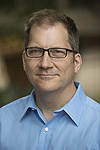 |
|
James Amundson
|
The Department of Energy recently awarded James Amundson, deputy head of the Scientific Computing Simulation Department, 50 million core hours to simulate Fermilab and CERN accelerators as part of the 2014 INCITE program. This could enable future discoveries in the Intensity and Energy frontiers of particle physics.
Amundson's was one of 59 projects chosen by INCITE to share 6 billion core hours at DOE computing facilities. Amundson, along with Co-Principal Investigators Qiming Lu, Alexandru Macridin, Chong Shik Park, Panagiotis Spentzouris and Eric Stern, will lead the project.
The INCITE (Innovative and Novel Computational Impact on Theory and Experiment) program gives researchers access to two of America's fastest supercomputers: Argonne National Laboratory's Mira, a 10-petaflop IBM Blue Gene/Q system, and Oak Ridge National Laboratory's Titan supercomputer, a 27-petaflop Cray XK7 hybrid system.
Read more in the Department of Energy press release.
|
Managing and moving massive data for NOvA
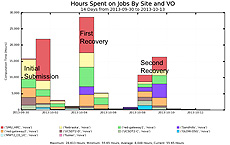 |
The NOvA experiment's new production capabilities run jobs on Open Science Grid resources through large-scale software distribution and large-files handling. Over two weeks, NOvA jobs ran on 10 OSG clusters (see different colors) at five sites and FermiCloud for a total of 90,000 CPU hours. Jobs were submitted in three "waves."
|
Members of the NOvA experiment, along with personnel from the Scientific Computing Division and systems administrators from participating Open Science Grid institutions, recently deployed the experiment's large-scale C++ analysis code to run on demand on participating OSG sites.
The resulting production campaign was the culmination of several months of work.
NOvA is attempting to observe the appearance of electron neutrinos as a result of neutrino oscillations within the NuMI beam. The NOvA far detector is usually run with two main independent output-event streams, a cosmic trigger and a beam trigger, which contains the oscillated neutrino signal. The data is transferred back to Fermilab as soon as it becomes available and is cataloged and archived for permanent storage. To extract the oscillated neutrino signal from this data, it is critical to understand the cosmic-ray background in great detail. This is done through computing simulations, the focus of the computational activity on OSG.
The deployment team faced two major obstacles that they needed to overcome: deploying a consistent version of rapidly changing software to many different OSG sites and efficiently transferring large amounts of data to these sites. To overcome the first challenge, they used the CERN Virtual Machine File System. CVMFS stores an experiment's entire software suite, including all of the external dependencies, on a set of distribution servers. As individual worker nodes require access to software libraries, they download the needed libraries and store them in a local cache. The system downloads only the software that is needed for an individual job rather than the entire suite.
The second challenge, efficiently transferring data to sites, was tackled by using Fermilab's file cataloging front end, using software called dCache, to its ENSTORE mass storage system. From dCache, the sequential access via metadata (SAM) data management system retrieves the input file and then transfers the files in series to the worker nodes, which process the input file. Once the processing is completed, output files are automatically transferred back to Fermilab for cataloging and archiving. The NOvA collaboration targeted the generation of 1,000,000 events — about three times as many events as have ever been produced in the past. This was achieved by running 10,000 jobs, requiring almost 90,000 CPU hours and producing 2 terabytes of data during two weeks of operations.
NOvA's Andrew Norman and Fermilab's Gabriele Garzoglio spearheaded this effort, along with collaborators from Southern Methodist University, University of Nebraska-Lincoln, University of Chicago, University of California, San Diego, University of Wisconsin - Madison and FermiCloud. The lessons learned and success of these accomplishments serve as good precursors for use of the OSG by other similar experiments, such as LBNE.
—Nathan Mayer, Tufts University, and Gavin Davies, Iowa State University
|
UChicago-Argonne-Fermilab joint speaker series on clean energy - Dec. 4 at Argonne
Fermilab Director Nigel Lockyer, Argonne Lab Director Eric Isaacs, and University of Chicago Vice President for Research and for National Laboratories Donald Levy invite you to "Clean Energy 2030: Building a Sustainable Future," the eighth in a series of joint speaker events for University of Chicago faculty and Argonne and Fermilab scientists, researchers and engineers.
The program takes place Wednesday, Dec. 4, from 6-9 p.m. at the Argonne Theory and Computing Science Building. An optional tour of Argonne's new Energy Science Building is included. Mark Peters, Argonne deputy laboratory director for programs, will moderate a discussion with Leah Guzowski, Hussein Khalil, Peter Littlewood and Robert Rosner. See this flyer for more information. RSVP by Nov. 27.
|
Superconducting video camera sees the universe in living color
From IEEE Spectrum, Nov. 11, 2013
Your camera sees the world in black and white; but a new astronomical camera sees the stars in color.
Almost every imaging device on the planet (or in orbit, for that matter) sees the world in black and white: incoming photons hit the sensor, knock electrons loose, and generate a current. If the incoming photon's energy is anywhere in the detector's sensitivity range, the result is the same: the pixel is white.
Read more
|
|
The shape of a subatomic fireball
Shapes in the subatomic realm are difficult to describe. Ask a physicist about the shape of an electron, and she might talk about the shape of the probability cloud of possible electron positions, or maybe say that the electron itself is a speck of zero size (to the limit of anyone's ability to measure), or might just ask what you mean by "shape," anyway. The macroscopic world that we know well is full of objects assembled from septillions of particles, and these particles are distributed in space as shapes. Fundamental particles are, by definition, not made of anything but themselves, so they can't always be described in familiar terms like shape, color and taste (except metaphorically).
However, not all particles are fundamental. Mesons are pairs of quarks bound by the strong force, protons and neutrons are made of three quarks, and more exotic combinations may have recently been discovered. The quarks orbit one another in specific spatial patterns that could be called shapes, though the physicists who study them speak in terms of form factors and deep inelastic scattering.
Another spatially extended subatomic object is the fireball that forms when heavy nuclei collide. Unlike bound states of quarks, this substance is a kind of fluid — a rapidly expanding droplet in which quarks and gluons flow and mix. When it is first formed, the droplet is shaped like the overlap of the two nuclei: circular if the nuclei collided exactly face-on and almond-shaped if one was offset from the other (see figure in this related article). A few yoctoseconds later, the blob spreads out and changes shape according to pressure differences. The fact that this spreading is mostly elliptical is evidence that the quark-gluon fluid has almost zero (or exactly zero) viscosity.
But there's more to that shape than a simple ellipse, as CMS scientists revealed in a recent paper. The complete picture looks like the figure above: peripheral collisions result in a mostly elliptical shape with pear-like offsets, while central collisions result in a droplet that is slightly triangular. The triangular component was at first surprising, since the overlap region of two circular nuclei would be symmetric. Nuclei are not rigidly circular, though, and asymmetries in the collision allow asymmetries in the droplet to develop.
Not only do these measurements improve our understanding of an extreme state of matter, but it is satisfying to finally see the shapes of liquid splashes a trillion times smaller than a drop of water.
—Jim Pivarski
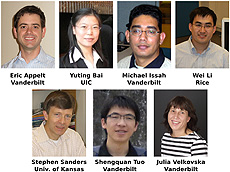 |
The scientists pictured above performed this detailed measurement of the shapes of quark-gluon fireballs.
|
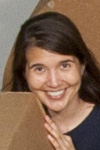 |
The CMS experiment has participated in the Frontier Science Result column since before the column's name was invented. Over the last four years, articles describing measurements by US CMS scientists have benefited from editing like that being provided by current Fermilab Today editor Leah Hesla. |
|
Women at work
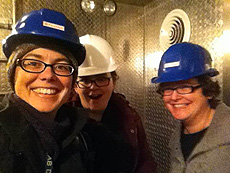 |
| Last week a front-end electronics board for MINERvA was replaced by a team of detector experts — who coincidentally all happened to be women. This is the first time an all-female team has performed this task. Dr. Carrie McGivern took a celebratory picture on the elevator on the way up to the surface from the underground detector. From left: Dr. Carrie
McGivern, University of Pittsburgh; Anne Norrick, College of William and Mary; Prof. Emily Maher, Massachusetts College of Liberal Arts. Photo: Carrie McGivern |
|
White House announces nominations for senior Department of Energy positions
From FYI: The AIP Bulletin of Science Policy News, Nov. 20, 2013
The White House recently announced its intention to make nominations for three senior Department of Energy positions: the newly established Under Secretary for Science and Energy, Director of the Office of Science, and Director of the Advanced Research Projects Agency - Energy.
Read more
|
|